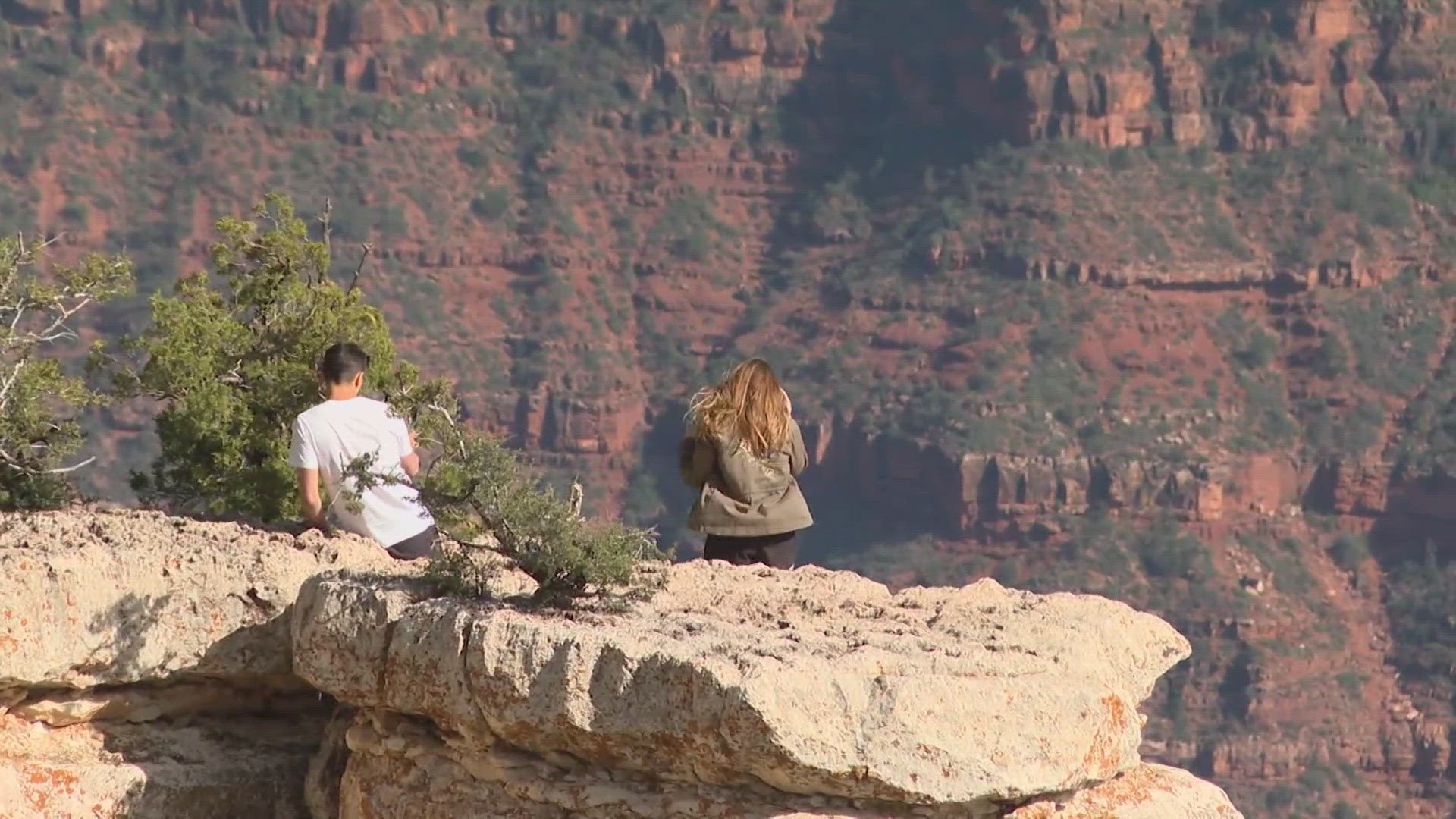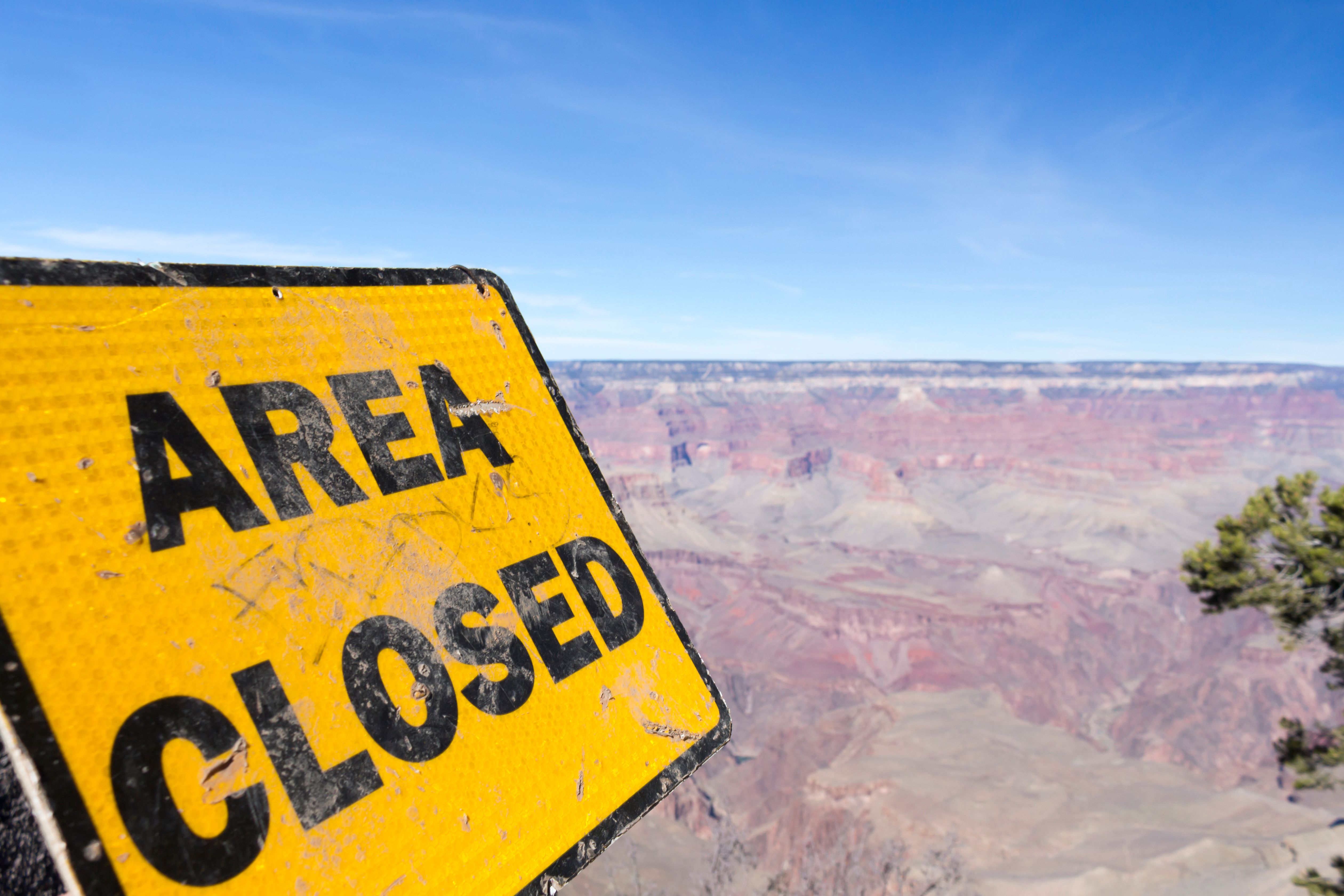Hey there, adventurers! If you're planning a trip to the Grand Canyon anytime soon, you might want to buckle up and pay attention. The iconic trails at this breathtaking national park are currently experiencing closures due to a chlorine leak that has thrown a wrench into everyone's travel plans. Yep, you heard that right—a chlorine leak. Who would’ve thought that something like this could disrupt one of the most awe-inspiring natural wonders on Earth?
Now, before we dive into the nitty-gritty details, let’s talk about why this matters. The Grand Canyon isn’t just another tourist spot—it’s a sacred place that millions of people from all over the globe dream of visiting. From hiking along its rugged trails to marveling at its stunning vistas, it offers experiences that are hard to replicate anywhere else. But with these trail closures, your carefully planned itinerary might need a bit of tweaking.
Don’t worry, though. We’ve got you covered. In this article, we’ll break down everything you need to know about the Grand Canyon trails closure, including what caused the chlorine leak, how it affects visitors, and what you can do to still enjoy your visit despite the disruptions. So grab a cup of coffee (or maybe a cold beer), settle in, and let’s get started!
Read also:Overtime Megan Leak Nude Unveiling The Truth Behind The Controversy
Here’s a quick overview of what we’ll cover:
- What is the Chlorine Leak?
- How Did It Happen?
- Which Trails Are Closed?
- Impact on Visitors
- Alternative Activities
- Safety Precautions
- Timeline for Reopening
- Environmental Effects
- Visitor Feedback
- Conclusion
What is the Chlorine Leak?
Alright, let’s start with the basics. The chlorine leak at the Grand Canyon isn’t something you’d expect to hear about when planning your dream vacation. Essentially, a malfunction in the water treatment system led to an accidental release of chlorine gas near some of the park’s most popular trails. This isn’t your typical plumbing issue—it’s a serious situation that has forced park officials to close certain areas until they can ensure visitor safety.
Chlorine gas, if you’re not familiar with it, is a highly toxic substance that can cause respiratory problems, eye irritation, and even long-term health effects if inhaled in large quantities. That’s why park authorities had no choice but to act quickly to protect both visitors and staff.
Why Chlorine is Used in Water Systems
But why is chlorine used in the first place? Well, it’s a common disinfectant used to treat drinking water and prevent the spread of harmful bacteria and viruses. While it’s essential for keeping water safe, leaks like this one can pose significant risks. The Grand Canyon relies heavily on its water infrastructure to support thousands of visitors daily, so maintaining its systems is critical.
How Did It Happen?
Now, here’s where things get a little technical. According to reports from park officials, the leak occurred due to a mechanical failure in the water treatment plant. A faulty valve or seal allowed chlorine gas to escape into the surrounding area, triggering the emergency response. This kind of incident is rare but serves as a reminder of how important it is to maintain aging infrastructure in national parks.
Park staff were alerted almost immediately by automated sensors, and they sprang into action to contain the leak and evacuate affected areas. It’s worth noting that no one was injured during the incident, which is a huge relief considering the potential dangers involved.
Read also:6ar6ie6 Onlyfans Leak The Untold Story You Need To Know
Lessons Learned
This situation highlights the importance of regular maintenance and inspections of critical infrastructure. As more people visit national parks each year, the strain on their systems increases, making incidents like this more likely. Moving forward, the National Park Service will likely implement stricter protocols to prevent similar occurrences in the future.
Which Trails Are Closed?
So, what does this mean for your hiking plans? Unfortunately, several key trails at the Grand Canyon are currently closed due to the chlorine leak. These include:
- Bright Angel Trail
- South Kaibab Trail
- Rim Trail (sections near the water treatment plant)
These trails are among the most popular in the park, so many visitors will need to adjust their itineraries accordingly. Don’t worry, though—there are plenty of other trails and activities to enjoy while these areas are off-limits.
Why These Trails?
The affected trails were chosen based on proximity to the source of the leak and wind patterns that could spread chlorine gas. Park officials wanted to ensure that visitors and staff were kept as far away from the danger zone as possible. While it’s frustrating for those who had their hearts set on these specific hikes, safety always comes first.
Impact on Visitors
Let’s face it—having your favorite trails closed can be a real bummer. But it’s not just about missing out on scenic views; the closures also affect lodging, dining, and transportation arrangements for many visitors. For example, some shuttle services that rely on access to these trails have been temporarily suspended, causing delays and confusion.
Additionally, tour operators who offer guided hikes and other activities may need to modify their offerings. If you booked a package deal or tour that included one of the closed trails, be sure to check with the provider for updates or alternatives.
What You Can Do
If your plans are affected by the closures, don’t panic. Reach out to park rangers or visitor centers for guidance on alternative routes and activities. They’re there to help you make the most of your trip, even if things don’t go exactly as planned.
Alternative Activities
Just because some trails are closed doesn’t mean you can’t still enjoy everything the Grand Canyon has to offer. Here are a few ideas to consider:
- Explore lesser-known trails like the Hermit Trail or Widforss Trail.
- Take a scenic drive along Desert View Drive for breathtaking views.
- Visit the Grand Canyon Village to learn about the park’s history and geology.
- Go stargazing at one of the park’s designated dark-sky areas.
There’s so much to see and do at the Grand Canyon that you won’t run out of options, even with some trails off-limits.
Pro Tip: Plan Ahead
Before heading to the park, check the official website or social media channels for the latest updates on trail conditions. This way, you can plan your activities accordingly and avoid disappointment.
Safety Precautions
While the immediate threat from the chlorine leak has been addressed, it’s still important to stay informed about any ongoing safety measures. Park officials have set up monitoring stations to ensure air quality remains safe, and they’re regularly updating the public on developments.
Here are a few safety tips to keep in mind:
- Avoid areas marked as restricted or closed.
- Follow all instructions from park rangers and staff.
- Stay hydrated and wear sunscreen, especially if you’re exploring alternative trails.
Remember, the park wants you to have a great experience, but your safety is their top priority.
Timeline for Reopening
So, when can you expect the affected trails to reopen? Park officials haven’t provided an exact timeline yet, but they’ve stated that repairs and testing are underway. Once they’re confident that the area is safe for visitors, the trails will be reopened. In the meantime, patience is key.
Keep an eye on the National Park Service website or social media pages for the latest updates. They’ll announce the reopening as soon as possible, so you won’t miss a moment of your adventure.
What Happens Next?
Once the repairs are complete, park staff will conduct thorough inspections to ensure everything is functioning properly. They’ll also review the incident to identify any lessons learned and improve their processes moving forward.
Environmental Effects
Another concern with incidents like this is the potential impact on the environment. While chlorine gas itself dissipates relatively quickly, there’s always a risk of contamination in nearby water sources or soil. Park officials are monitoring the area closely to assess any long-term effects.
Thankfully, the Grand Canyon’s ecosystem is resilient, and steps are being taken to minimize any harm. Still, it’s a reminder of how delicate these natural environments are and the importance of protecting them.
Conservation Efforts
The National Park Service works tirelessly to preserve the Grand Canyon and its surrounding areas. Initiatives like habitat restoration, wildlife protection, and sustainable tourism practices are vital to maintaining the park’s beauty for future generations.
Visitor Feedback
What are visitors saying about the closures? Some have expressed frustration, while others are taking it in stride and finding new ways to enjoy their time at the park. Social media platforms are filled with stories and photos from adventurers who’ve discovered hidden gems they might not have otherwise explored.
If you’ve visited the Grand Canyon recently, we’d love to hear your thoughts! Share your experiences in the comments below or on our social media pages. Your feedback helps us better understand how incidents like this affect real people and how we can improve our coverage.
Conclusion
Alright, that wraps up our deep dive into the Grand Canyon trails closure caused by the chlorine leak. While it’s certainly a disruption, it’s also a reminder of the importance of safety and conservation in our national parks. Whether you’re a seasoned hiker or a first-time visitor, there’s still plenty to discover and enjoy at this incredible destination.
So, what’s next? If you’re planning a trip to the Grand Canyon, make sure to check for updates on trail conditions and plan accordingly. And if you’ve already been there, drop us a comment and let us know how you made the most of your visit despite the closures.
Until next time, keep exploring and stay curious. The world’s full of wonders waiting to be discovered—and sometimes, the best adventures come from unexpected detours. Happy trails, everyone!


